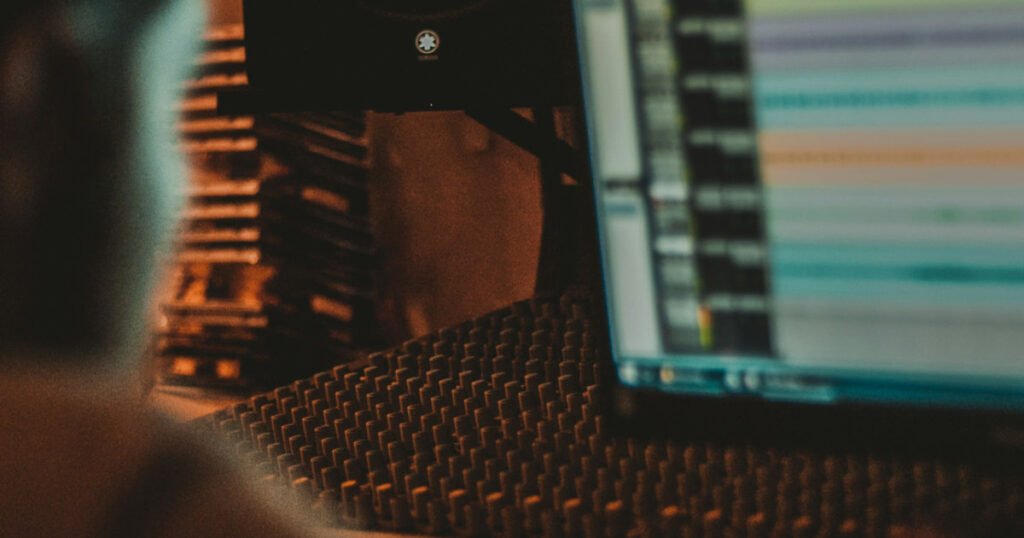Optimizing Audio Post-Production Workflow


Ever been in that spot where your audio post-production seems more like a maze than a straight line? Let’s unravel that. Streamlining your workflow in audio post-production isn’t just about cutting corners; it’s about smart project management, efficiency, and getting the best out of your audio workflow. It’s about making every step count so that you’re not just doing more, but also producing top-notch results.
Identifying Bottlenecks in Your Audio Workflow
You know the drill. You’re knee-deep in an audio project, and suddenly, you hit a wall. Maybe it’s the repetitive tasks or that one step that always takes longer than it should. Identifying these bottlenecks is crucial. Take a step back and analyze your workflow. Is it file management that’s tripping you up, or maybe it’s a specific editing task? Once you pinpoint the problem, it’s half-solved.
Now, consider a workflow audit. Map out each step of your current process, from recording to editing and mixing. Ask yourself, “Where do I spend most of my time?” and “Which steps could be more efficient?” Sometimes, the bottleneck isn’t a task but a lack of organization or a missing skill. Addressing these issues can significantly smooth out your workflow.
Efficiency Hacks for Audio Editing
Let’s talk about efficiency in the editing bay. Keyboard shortcuts are your best friends here. Learning and customizing them can shave off a significant amount of time from your editing process. Also, consider creating templates for projects you frequently work on. These templates can include your preferred track layouts, effects chains, and even basic mixing settings.
Another game-changer is batch processing. Got a bunch of files that need the same effect or edit? Batch process them instead of doing it one by one. This approach isn’t just a time-saver; it ensures consistency across your audio files. Remember, efficiency isn’t just about speed; it’s also about maintaining quality while reducing the time and effort involved.
Project Management: Keeping Your Audio Projects on Track
Project management might sound like corporate speak, but it’s a lifesaver in the post-production world. Start by breaking down your project into smaller, manageable tasks. This breakdown makes it easier to track progress and identify any delays early on. Use project management tools – yes, there are ones specifically designed for audio post-production – to keep everything organized.
Communication is key, especially if you’re working with a team. Regular check-ins and updates ensure everyone’s on the same page. And don’t forget about deadlines. They can be stressful, but they also help you prioritize tasks and manage your time more effectively. A well-managed project means less rushing and more time for creative work.
Leveraging Technology for Enhanced Audio Production
Technology is constantly evolving, and so should your workflow. Stay updated with the latest software and plugins that can automate or simplify complex tasks. AI-based tools, for instance, can be a big help in noise reduction and sound analysis. These tools can speed up tedious tasks, allowing you to focus more on the creative aspects.
Don’t underestimate the power of good hardware, either. Investing in a faster computer or better audio interface can significantly improve your workflow. It’s not just about having the latest gadgets; it’s about having the right tools that complement your work style and enhance your efficiency. After all, in audio post-production, time is often as critical as the quality of sound.
In the end, optimizing your audio post-production workflow boils down to being smart about your time and resources. Whether it’s identifying those pesky bottlenecks, implementing nifty efficiency hacks, managing your projects like a pro, or leveraging the latest tech, each step you take towards a streamlined workflow can make a huge difference. Remember, the goal is to work smarter, not harder, so that you can unleash your full creative potential without getting bogged down by inefficiencies.
Think about the last film that truly captivated you. Chances are, it wasn’t just the visuals that drew you in – it was the powerful interplay of sound and story. Audio in film is not just about background music or clear dialogue; it’s an art form that shapes our emotional journey through a story. Intrigued? Stay tuned, as we’re about to delve into the fascinating world where audio meets narrative, and discover how sound transforms the art of film storytelling.

Responses